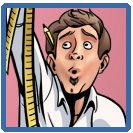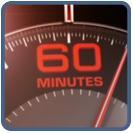Figure drawing is a challenging pursuit. To be competent at drawing the body you have to seamlessly integrate knowledge of gesture, weight, anatomy, and perspective. It’s challenging… but it’s also rewarding. You can’t escape learning the principles of figure drawing unless you’re making a comic about an inanimate object, so in the end, difficulty is somewhat of a moot point. You will learn to draw the human form (if you haven’t already) so you might as well discover how to love it now. Take heart! We here at Making Comics will be here to help every step of the way. The first step is learning to see the body in terms of basic shapes, and how those shapes relate to one another in terms of relative size (also called proportion).
This is not a guide about how to draw the figure. This is a guide about how to see the figure. In future articles we will be addressing the actual process of drawing the figure in detail. (more…)











